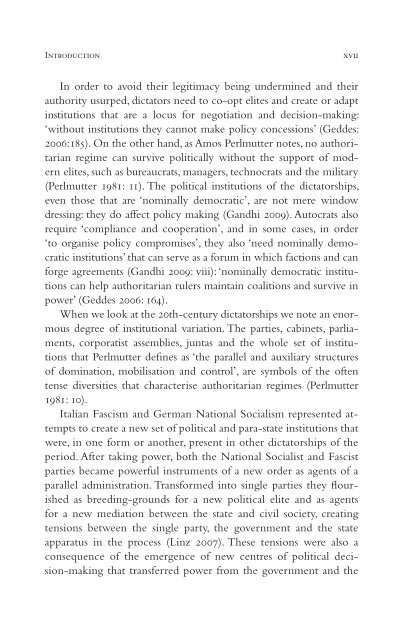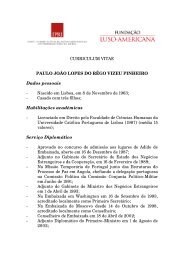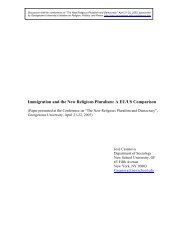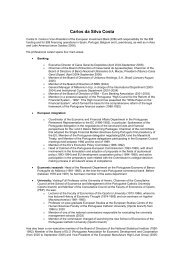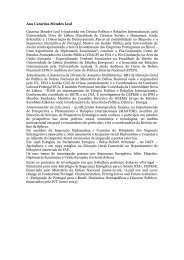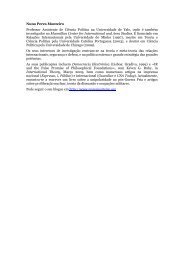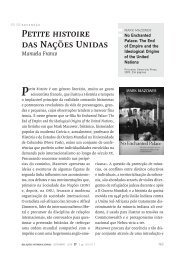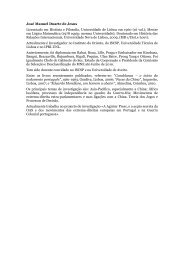ruling elites and decision-making in fascist-era dictatorships
ruling elites and decision-making in fascist-era dictatorships
ruling elites and decision-making in fascist-era dictatorships
You also want an ePaper? Increase the reach of your titles
YUMPU automatically turns print PDFs into web optimized ePapers that Google loves.
IntroductionxviiIn order to avoid their legitimacy be<strong>in</strong>g underm<strong>in</strong>ed <strong>and</strong> theirauthority usurped, dictators need to co-opt <strong>elites</strong> <strong>and</strong> create or adapt<strong>in</strong>stitutions that are a locus for negotiation <strong>and</strong> <strong>decision</strong>-<strong>mak<strong>in</strong>g</strong>:‘without <strong>in</strong>stitutions they cannot make policy concessions’ (Geddes:2006:185). On the other h<strong>and</strong>, as Amos Perlmutter notes, no authoritarianregime can survive politically without the support of modern<strong>elites</strong>, such as bureaucrats, managers, technocrats <strong>and</strong> the military(Perlmutter 1981: 11). The political <strong>in</strong>stitutions of the <strong>dictatorships</strong>,even those that are ‘nom<strong>in</strong>ally democratic’, are not mere w<strong>in</strong>dowdress<strong>in</strong>g: they do affect policy <strong>mak<strong>in</strong>g</strong> (G<strong>and</strong>hi 2009). Autocrats alsorequire ‘compliance <strong>and</strong> coop<strong>era</strong>tion’, <strong>and</strong> <strong>in</strong> some cases, <strong>in</strong> order‘to organise policy compromises’, they also ‘need nom<strong>in</strong>ally democratic<strong>in</strong>stitutions’ that can serve as a forum <strong>in</strong> which factions <strong>and</strong> canforge agreements (G<strong>and</strong>hi 2009: viii): ‘nom<strong>in</strong>ally democratic <strong>in</strong>stitutionscan help authoritarian rulers ma<strong>in</strong>ta<strong>in</strong> coalitions <strong>and</strong> survive <strong>in</strong>power’ (Geddes 2006: 164).When we look at the 20th-century <strong>dictatorships</strong> we note an enormousdegree of <strong>in</strong>stitutional variation. The parties, cab<strong>in</strong>ets, parliaments,corporatist assemblies, juntas <strong>and</strong> the whole set of <strong>in</strong>stitutionsthat Perlmutter def<strong>in</strong>es as ‘the parallel <strong>and</strong> auxiliary structuresof dom<strong>in</strong>ation, mobilisation <strong>and</strong> control’, are symbols of the oftentense diversities that characterise authoritarian regimes (Perlmutter1981: 10).Italian Fascism <strong>and</strong> German National Socialism represented attemptsto create a new set of political <strong>and</strong> para-state <strong>in</strong>stitutions thatwere, <strong>in</strong> one form or another, present <strong>in</strong> other <strong>dictatorships</strong> of theperiod. After tak<strong>in</strong>g power, both the National Socialist <strong>and</strong> Fascistparties became powerful <strong>in</strong>struments of a new order as agents of aparallel adm<strong>in</strong>istration. Transformed <strong>in</strong>to s<strong>in</strong>gle parties they flourishedas breed<strong>in</strong>g-grounds for a new political elite <strong>and</strong> as agentsfor a new mediation between the state <strong>and</strong> civil society, creat<strong>in</strong>gtensions between the s<strong>in</strong>gle party, the government <strong>and</strong> the stateapparatus <strong>in</strong> the process (L<strong>in</strong>z 2007). These tensions were also aconsequence of the emergence of new centres of political <strong>decision</strong>-<strong>mak<strong>in</strong>g</strong>that transferred power from the government <strong>and</strong> the


